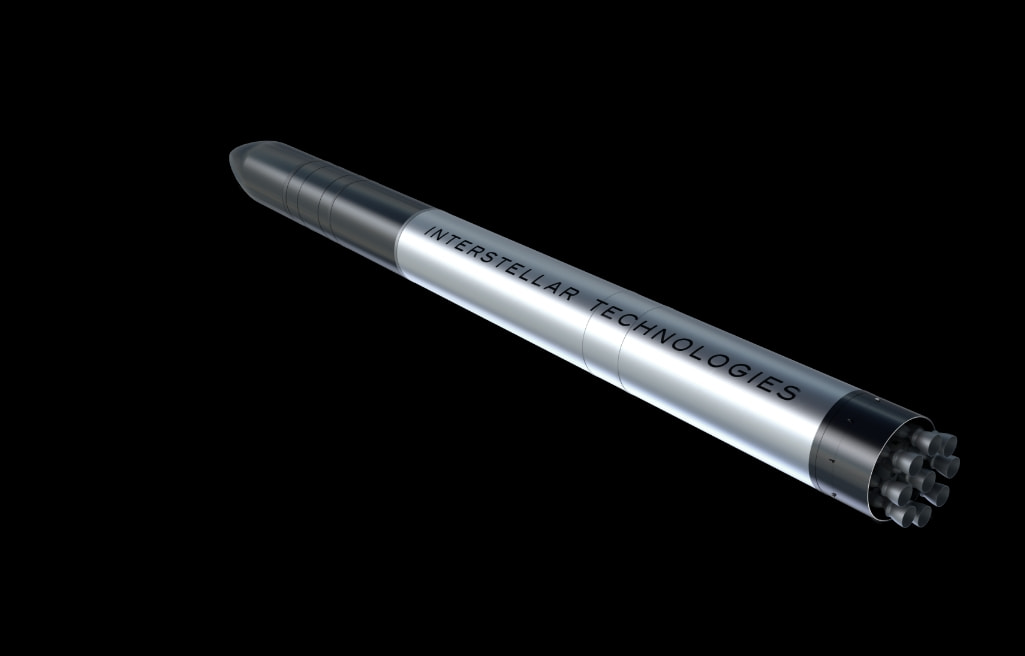DATE
IST Succeeds in Static Fire Test for Small Satellite Launch Vehicle ZERO
CATEGORY
TAG
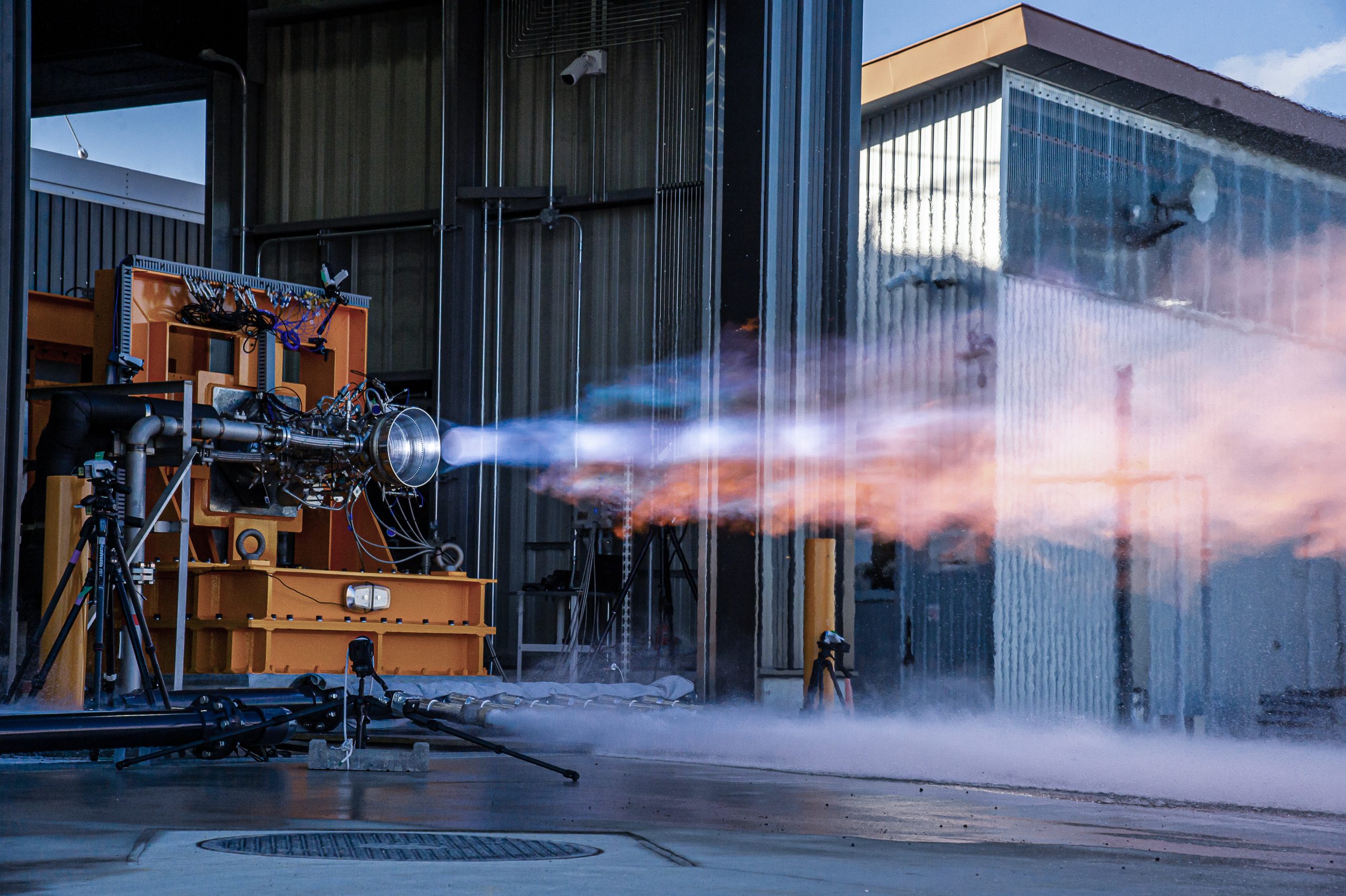
Hokkaido, Japan – Interstellar Technologies Inc. (hereinafter referred to as “IST”), a comprehensive space infrastructure company committed to tackling global challenges through space transportation and utilization, has reached a new milestone with the completion of a static fire test for its small satellite launch vehicle, ZERO, powered by Liquid Biomethane (LBM).
The test was held at Hokkaido Spaceport’s (HOSPO) ‘Launch Complex-0 (LC-0)’ in Taiki, Hokkaido, and showcased the potential of biomethane as a sustainable rocket fuel. This milestone follows the success of the European Space Agency’s (ESA) development of a rocket engine using LBM, and represents a world-first for a private rocket company.(*1)
*1 Internally conducted research
High-Efficiency, Low-Cost Combustion Chamber
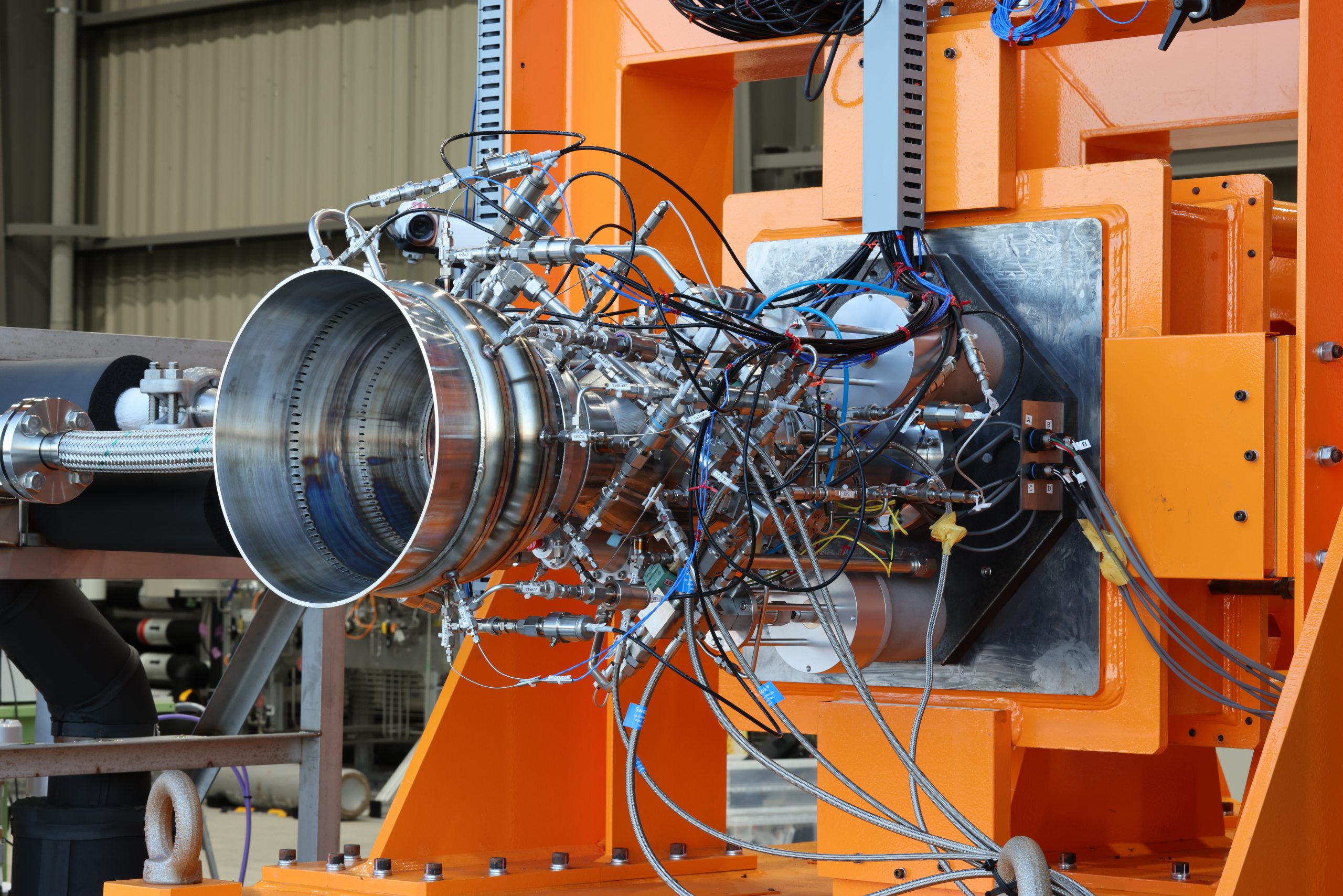
The combustion chamber of ZERO, designed in-house, adopts the pintle injector utilized in SpaceX’s (USA) engines. Although pintle injectors are generally known to have limited performance, research and development efforts with Tokyo University and JAXA Space Innovation through Partnership and Co-creation (J-SPARC) have led to design improvements that achieve high combustion performance. As a result, the number of components has been reduced to one-tenth of conventional engines, fundamentally lowering the manufacturing costs of a rocket engine, estimated to constitute half of the overall expenses.
This series of static fire tests will advance the development and manufacturing of a 130kN-class operational model based on the knowledge gained from the design, manufacturing, and testing
process of a 60kN-class subscale model.
Test Name: Static Fire Test of Combustion Chamber
Objective: Validation of main combustion chamber and
nozzle skirt assembly performance and durability
Timeframe: Nov. 28, 2023, to Jan. 31, 2024 (scheduled)
Location: Hokkaido Spaceport, “Launch Complex-0”
Combustion Duration: 10 seconds
Gas Generator Cycle and Regenerative Cooling System Debut in COSMOS
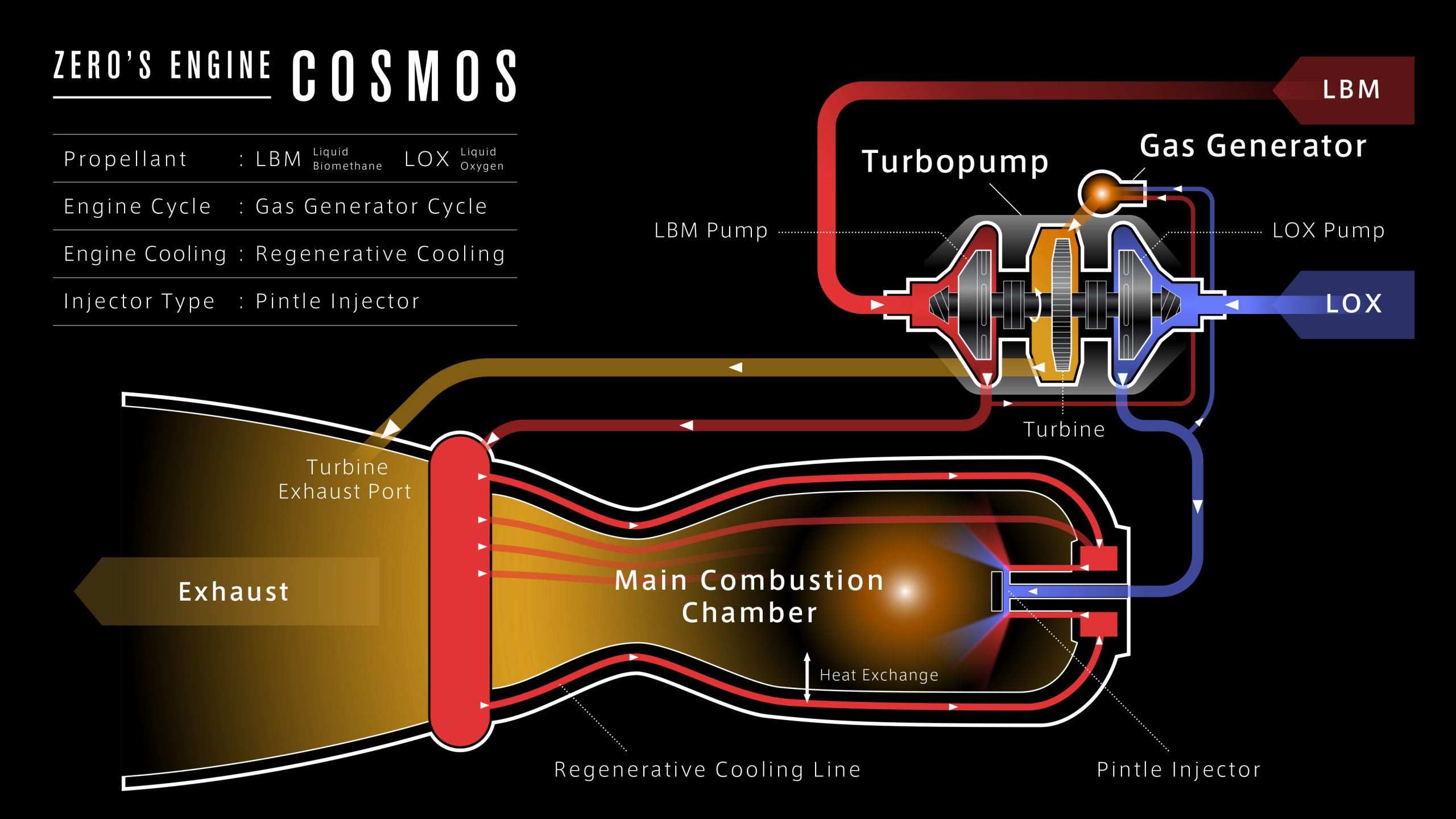
ZERO operates as a liquid-propellant rocket with LBM as its fuel and liquid oxygen as the oxidizer. This marks the inaugural adoption by IST of the gas generator cycle, which burns some of the propellants in a gas generator to drive a turbopump at tens of thousands of rotations per minute and deliver the fuel to the combustion chamber at high pressure. Additionally, the regenerative cooling effectively utilizes the fuel for cooling purposes within the combustion chamber walls. Tests for the combustion chamber, turbopump, and gas generator have been conducted, with future plans to integrate them.
ZERO’s engine has been named COSMOS primarily by the development team members, a title that embodies the spirit of the engine’s design. The name draws inspiration from how the spray pattern of the engine’s pintle injector resembles the petals of a cosmos flower, symbolizing Taiki.
High Performance and Sustainable Rocket Fuel for Environmentally-Conscious Launches
Liquid methane has emerged as a superior fuel choice for rocket launches due to its comprehensive advantages in price, fuel performance, ease of handling, availability, and environmental impact, making it the preferred choice for rocket companies worldwide, including SpaceX’s Starship. Recognizing the need for high-purity methane free of impurities in rocket propellants, IST has been deliberating on the procurement methods since selecting liquid methane as the fuel in 2020.
Meanwhile, Air Water Group has been at the forefront of establishing a regional circular supply chain, centered around the conversion of biogas derived from livestock manure in the Hokkaido Tokachi area into LBM – a sustainable alternative to liquid natural gas (LNG). In October 2022, the successful launch of the first domestic LBM manufacturing facility in Tokachi area marked a pivotal milestone in advancing fuel supply demonstrations to food processing plants, LNG trucks, and marine vessels.
The LBM used in the test is produced by separating and refining methane, the primary component of biogas, and subsequently liquefying it at approximately -160°C. It achieves the same high purity (99% or higher) as conventional rocket fuels used in the past. IST, impressed by the performance and procurement excellence of LBM, has decided to adopt Air Water’s LBM as the fuel for the ‘ZERO’ rocket.
Methane, a potent greenhouse gas next to carbon dioxide, poses a challenge in global warming due to its emissions from cattle. Moreover, within the region, issues such as odor and water pollution arising from livestock manure have become societal concerns. Through the use of LBM, IST and Air Water Hokkaido aim to make the majority of rocket fuel sustainable, contributing concretely to climate change mitigation. As a Hokkaido-based company surrounded by a thriving dairy industry, IST actively contributes to local energy self-reliance and environmental solutions.
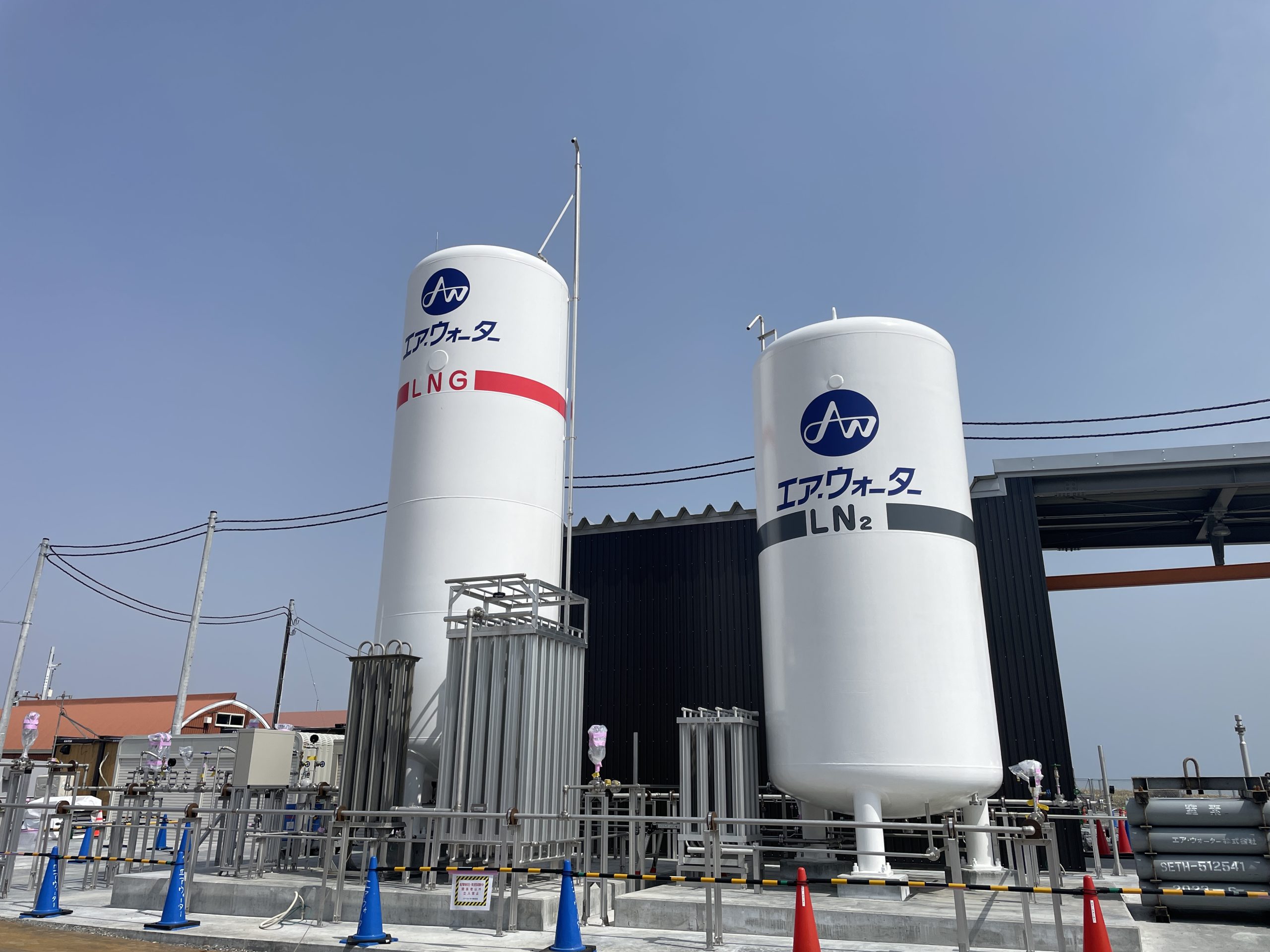
Competitive Pricing and Dedicated Launch Capability
ZERO is a small satellite launch vehicle designed to target the growing market for small-sized satellites in recent years. Building on the knowledge gained from the successful launch of the private suborbital launch vehicle ‘MOMO,’ the first of its kind in Japan’s private sector, IST is progressing toward the first launch of ZERO.
ZERO’s space transportation service distinguishes itself with competitive pricing—at less than 800 million JPY per launch (in mass production)—made possible through an integrated development and manufacturing process. Another key strength is its flexibility to provide customized launches tailored to the rising needs of satellite companies. For satellite companies in Japan, Asia, and Oceania, proximity to the launch site ensures convenience, reducing launch-related time and costs and enhancing overall value.
ZERO’s Capacity Boost: To establish Asia-Oceania Market Presence
With an eye on recent trends and the demand both locally and globally, ZERO is enhancing its capacity to launch satellites of up to 800 kilograms into Low Earth Orbit (LEO). This strategic contributes to the establishment of an independent domestic space transportation service. Simultaneously, it positions IST to establish a firm presence in the Asia-Oceania and European markets.
ZERO: Specifications
Height: 32m
Diameter: 2.3m
Total Weight: 71 ton
Propellant: Liquid Methane (Bio-Methane), Oxidizer: Liquid Oxygen
Number of Engines: 1st Stage: 9, 2nd Stage: 1
Payload Capacity: LEO 800kg / SSO 250kg *Future Maximum Capacity
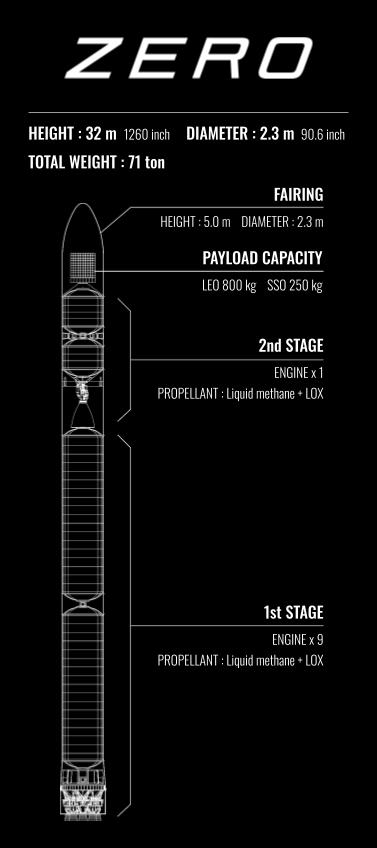
Press Release | 20231207_IST Succeeds in Static Fire Test for Small Satellite Launch Vehicle ZERO

